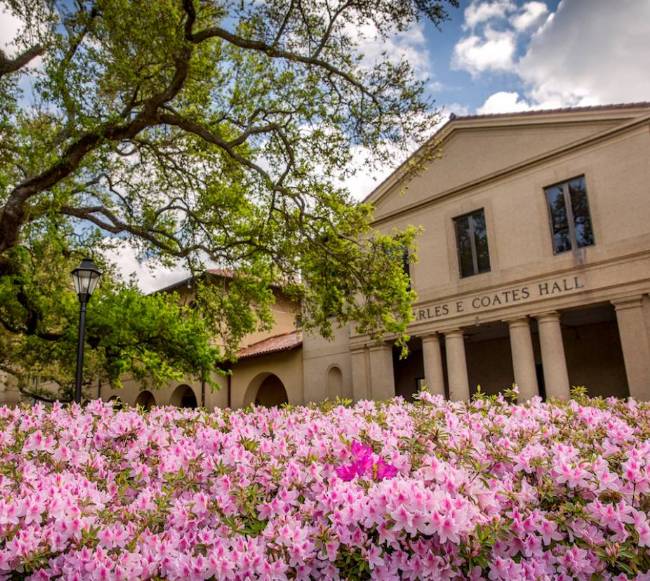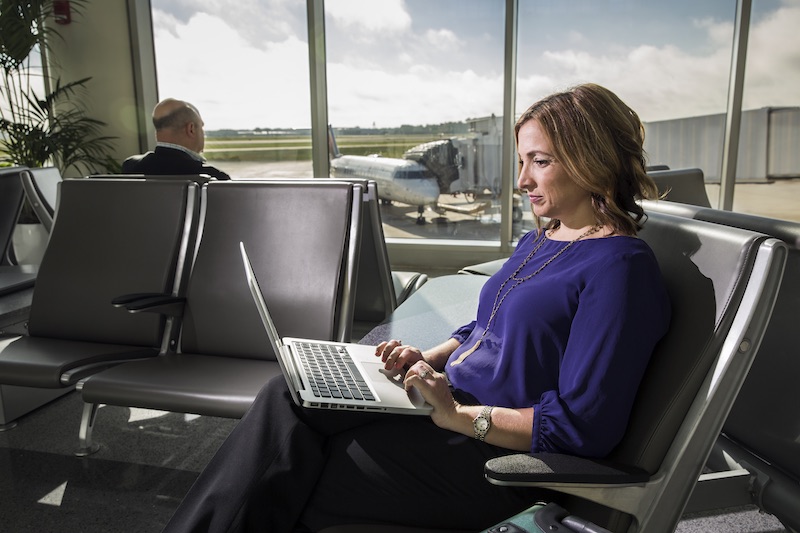LSU Researchers Envision the Future of Coastal Resilience With and For Louisiana Communities
October 09, 2025
LSU is leading two teams and contributing to two others that are finalists in the Gulf Futures Challenge, a national competition by the National Academies of Sciences, Engineering, and Medicine (NASEM) Gulf Research Program and Lever for Change, a nonprofit affiliate of the MacArthur Foundation.
The challenge funds innovative projects aimed at securing Louisiana’s energy independence and strengthening flood resilience. At its core, the competition asks: What does the future of energy security, tackling environmental change, and community well-being look like? That’s what LSU researchers are working to answer.
“This is not just a research project. This is home.”
— Andrew Schwarz, professor, Stephenson Department of Entrepreneurship & Information Systems, E. J. Ourso College of Business
The teams have already won $300,000 each, and are competing for two $20 million grants. On September 9, 2025, NASEM and Lever for Change selected 10 finalists for a total of $50 million in funding.
The fact that nearly half of the finalist teams involve experts from LSU is a testament to the urgent need for solutions in our state and the forward-looking, solution-minded spirit of Louisiana researchers and community members.
The finalists have each received an initial grant of $300,000 to further develop their project proposals to compete for two $20 million grants to implement their solutions. The teams are receiving extensive coaching and technical assistance from NASEM and Lever for Change. Even teams not selected for the final awards are eligible for up to $875,000 in additional project development support.
What types of efforts can help us meet our future energy demands and not only mitigate the impacts of natural disasters, but also improve our land and home value over time? Two of the Gulf Futures Challenge finalist teams are focusing on solutions in these areas.
Community Co-Financed Resilience in Lake Charles: A New Way to Pay for Safety and Prosperity
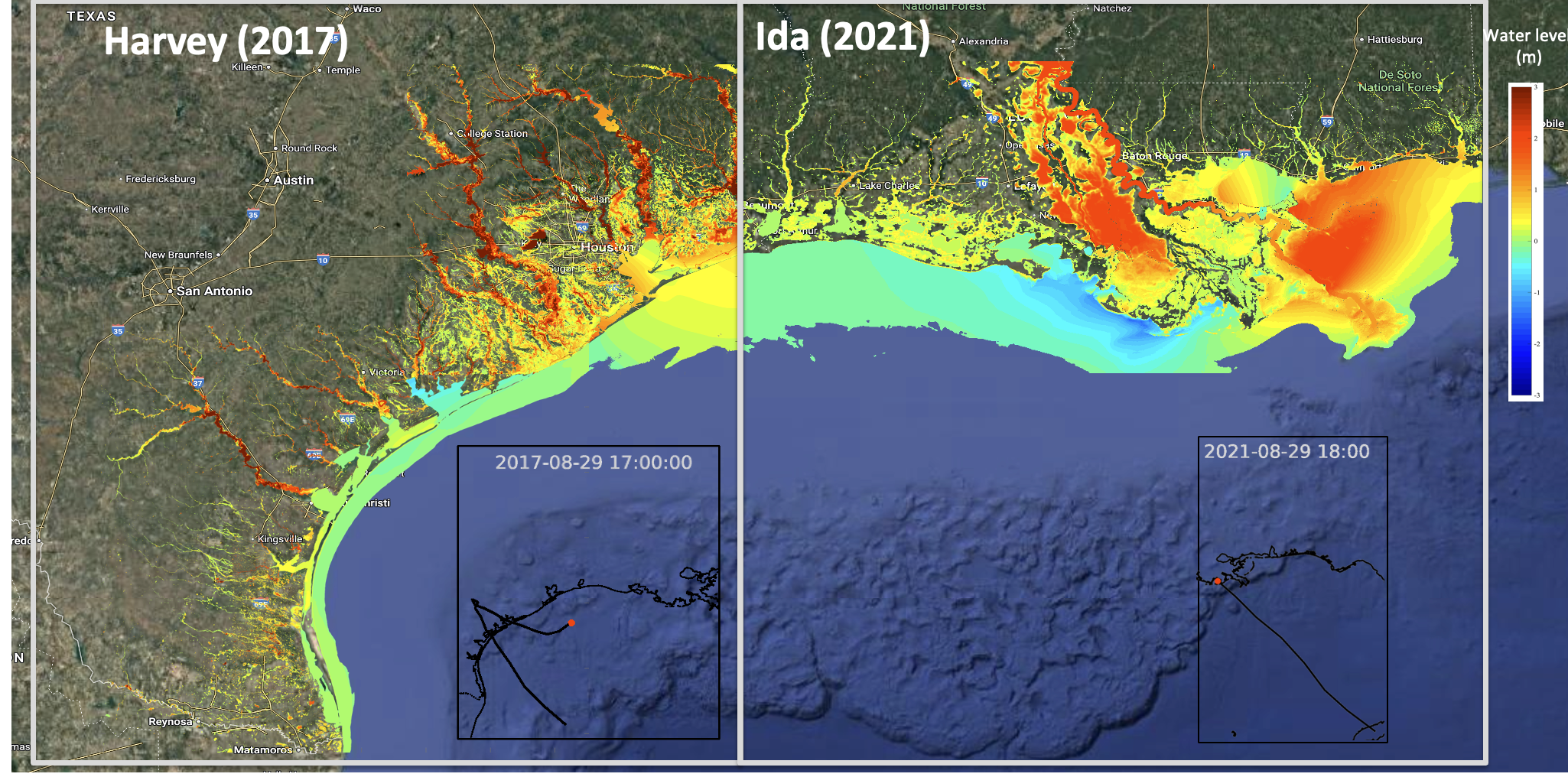
Compound flood simulation for hurricanes Ida and Harvey. State-of-the-art compound flood simulation created by Z. George Xue and colleagues will serve as one of the core technologies to be applied by both LSU-led Gulf Futures Challenge finalist teams.
Many Louisiana communities face rising flood risks and have fragile power systems that worsen the impacts of natural disasters. Families and businesses in many areas of Louisiana, such as Lake Charles, are experiencing power outages and more frequent flooding than in the past. Homes and business buildings are getting more difficult and expensive to insure. When individual families and businesses are left to address these issues on their own, sustainable solutions can seem impossible.
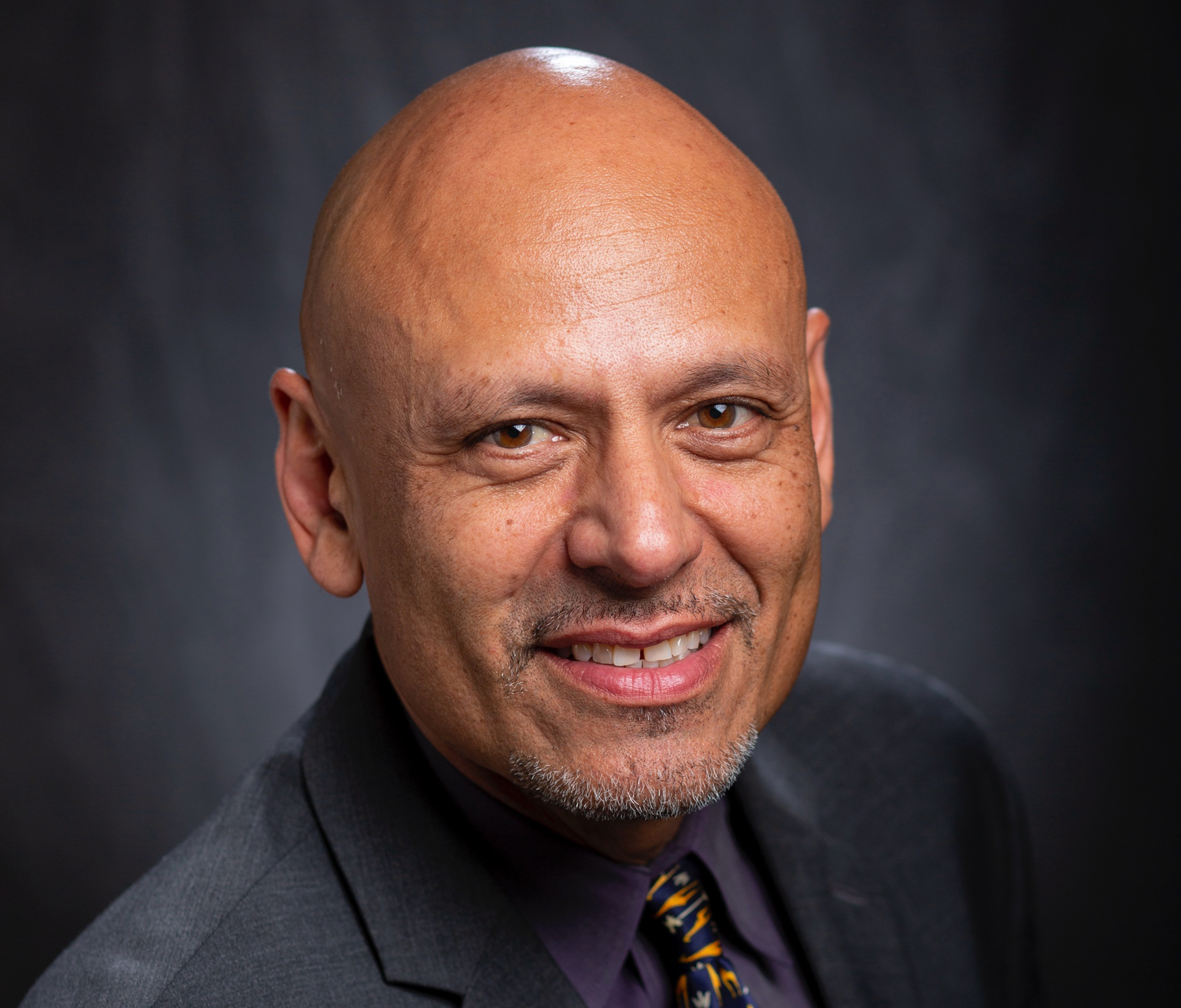
James Spencer
With the Community Co-Financed Flood and Energy Resilience (CCOFFER) project, James Spencer, a professor of architecture from LSU’s College of Art & Design is collaborating with experts in flood modeling, community adaptation, environmental laws and policies, civic advocacy, and community fundraising, many of whom are also active community members in Lake Charles, to explore community-based and community-financed solutions to coastal resilience in the city.
“We are exploring how to kick-start a process in which various Lake Charles stakeholders, from homeowners to insurance underwriters, can contribute according to their ability and economic interests to building the resilience infrastructure we all know is needed,” Spencer said.
Flooding risk is a complex issue. The chance of your home flooding is not just a matter
of how much rain falls in a given time or how high your home is above the flood plain.
Many residents also misunderstand the concept of a 100-year storm. Believing such
a storm only occurs every 100 years might lead resident to take their chances versus
planning for flooding.
Flooding risk is a dynamic problem that can increase over time due to macro-scale
changes, such as rising sea levels and land loss, as well as micro-scale changes,
including nearby construction or destruction of parks and wooded areas. Green spaces
reduce flood risk because they can absorb more water than paved areas. Thoughtful
urban planning in your city can substantially lower your home’s risk of flooding and
improve land value at the same time.
“The technologies exist, from solar microgrids to flood retention areas and floodwater-absorbing green spaces, to make communities like Lake Charles resilient to natural disasters,” Spencer said. “The question is, who will pay for these solutions?”
The problem is not a lack of solutions, this team suggests, but rather the need for more community-co-created solutions that the community stakeholders can confidently buy into, knowing what the return on their investments will be.
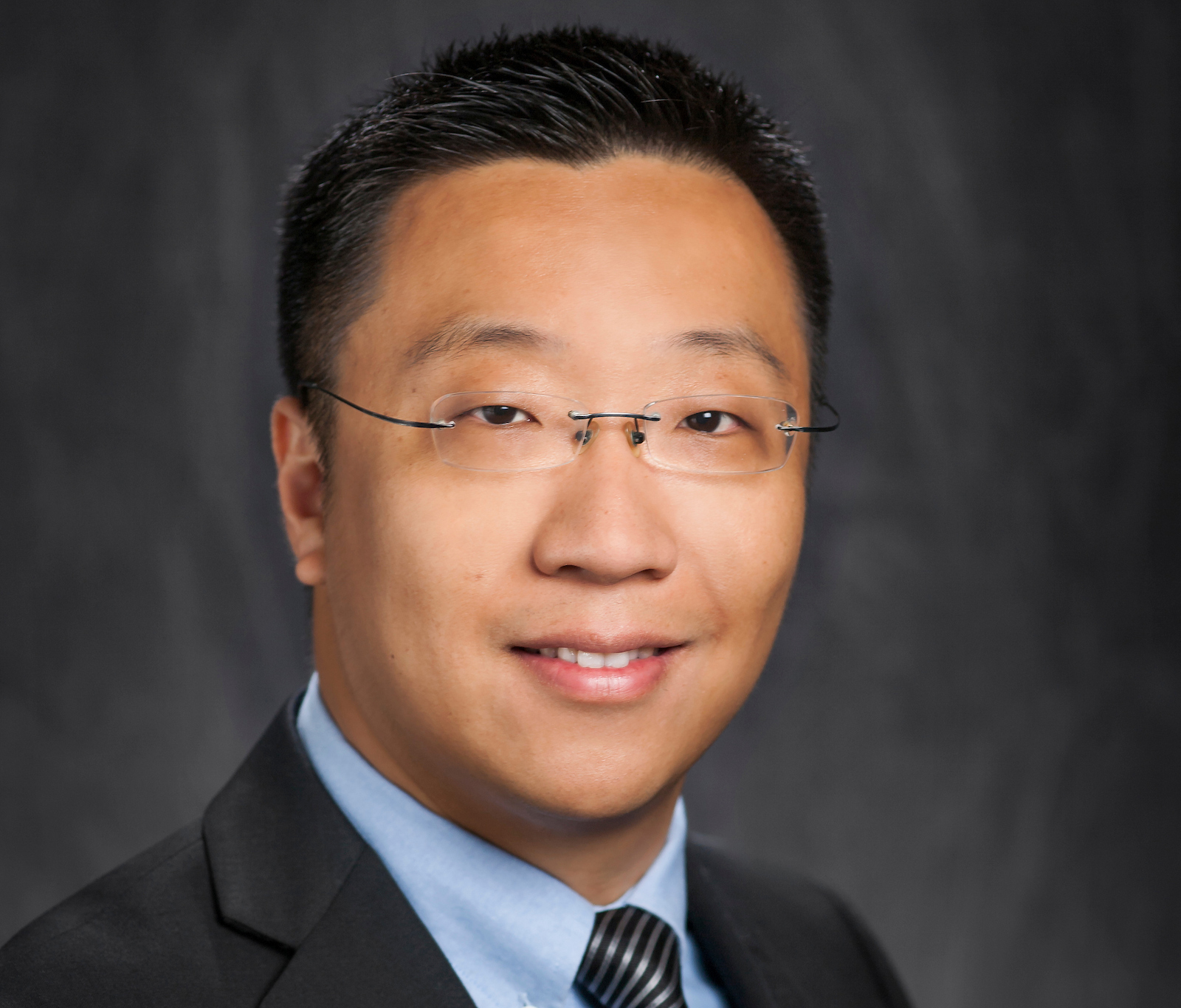
Zuo “George” Xue
As part of the CCOFFER project, Zuo “George” Xue, a professor in the Department of Oceanography & Coastal Sciences with joint appointments in the LSU College of Coast and Environment and the Center for Computation and Technology, is helping to translate global and regional datasets on atmospheric and ocean conditions into local storm and flooding risks under various conditions and solution implementation scenarios. From there, he works with collaborators to layer in land value and other social science data. The goal is to harness scientific data to help individual stakeholders in Lake Charles estimate the financial and societal value of community investments in resilience.
“Why does sea surface temperature in the Gulf matter to my own house, and to the price of my insurance? This is the kind of question we want to help residents answer,” Xue said.
Imagine a game like SimCity, but one in which Lake Charles stakeholders can place a park here, an energy microgrid there, a floodwater ditch here. The simulation provides estimates not only of flood risk changes, but also of land value changes. CCOFFER aims to create a tool that allows homeowners to see whether their home value goes up or their insurance premiums go down if their neighborhood invests in a green space, for example. Stakeholders will also be able to provide feedback on the simulation, requesting new features or data that might help them make decisions.
“We hope this project will increase local property values for local owners, increasing individual wealth and providing a powerful motivation for coordinated community planning,” Spencer said. In the long term, the goal is to use this project in Lake Charles as a pilot, applying lessons learned to other at-risk communities throughout Louisiana and beyond.
“This project is making good on the promise of a land grant institution, which means conducting scientific research not for its own sake but to improve people’s lives.”
— James Spencer, LSU professor of Architecture
Powering the Future: Iberia Parish Clean Energy Hub
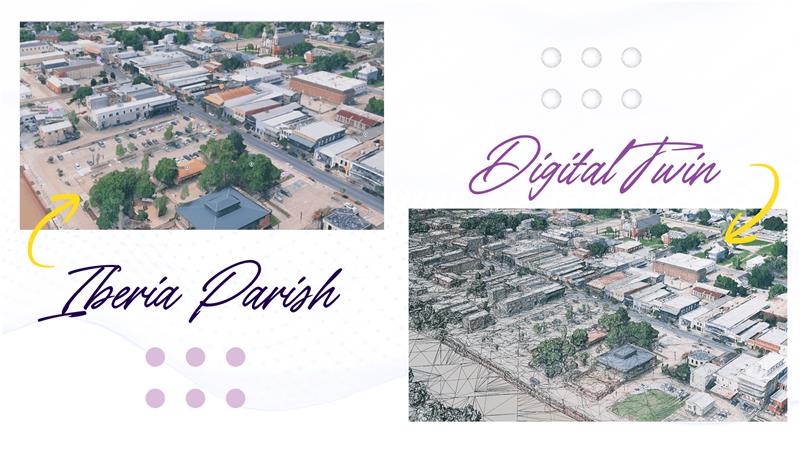
An aerial image of the Port of Iberia (left) juxtaposed with a visual representation of a digital twin of the Port, which is a virtual representation that can include topography, city layout, and various other layers of data for estimating flooding in different scenarios, visualizing the impacts of a nearby solar farm, and more.
Andrew Schwarz, a professor in the Stephenson Department of Entrepreneurship & Information Systems in the LSU E. J. Ourso College of Business, has long been interested in facilitating energy independence along the Gulf Coast. A few years ago, he received initial funding support from the Kathy and Roy O. Martin III Faculty Research Award, available to Ourso College faculty, to assemble a team to explore solutions. When the NASEM launched the Gulf Futures Challenge, Andrew and his team were ready to submit a strong proposal.
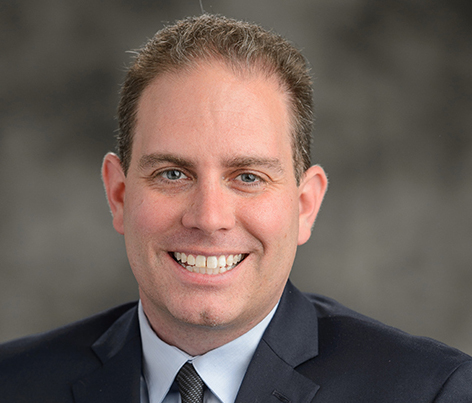
Andrew Schwarz
“This shows the power of local funding to build capacity,” Schwarz said. “When you donate to the university, it gives us the ability to create teams that can then compete nationally.”
Schwartz and his team, which includes experts and educators from LSU (including Xue),
the University of Louisiana at Lafayette, Betaversity, private companies with virtual
reality technologies, including Meta and Unity Technologies, and the nonprofit Do
It Greener Foundation, are focusing on Iberia Parish. This region is as rich in natural
resources as it is in culture, being home to wetlands, coastal landscapes, and farmland.
Unfortunately, its wetlands are eroding, which raises storm surge and flooding risks.
Energy demands and costs are also rising.
In 2023, a solar panel manufacturing company broke ground on a $1.1 billion solar
panel manufacturing facility in Iberia Parish. The facility could have been a jump
start in bringing jobs and green, sustainable energy to the parish. However, just
a short time later, the Iberia Parish city council passed an ordinance banning solar
farms within one mile of any residential areas.
“Effectively, there was no area in the parish that met those criteria. So we can make solar panels here, but we can't use them,” Schwarz said. “Our thesis is that education should have come first, and should always come first.”
The Iberia Parish Clean Energy Hub team is aware that major clean energy projects can stall without education, trust, and a trained local workforce to put those projects into action. That is why they are aiming to build an ecosystem of community engagement and education, including K–12 programming, community workshops, micro-credentials from LSU and UL Lafayette, and immersive virtual reality and augmented reality training focused on green energy technologies.
“We will explore and test various green energy solutions in Iberia Parish, everything from carbon sequestration, to co-localizing solar energy production and agriculture, to creating more wetland areas that capture more carbon from the atmosphere,” Schwarz said.
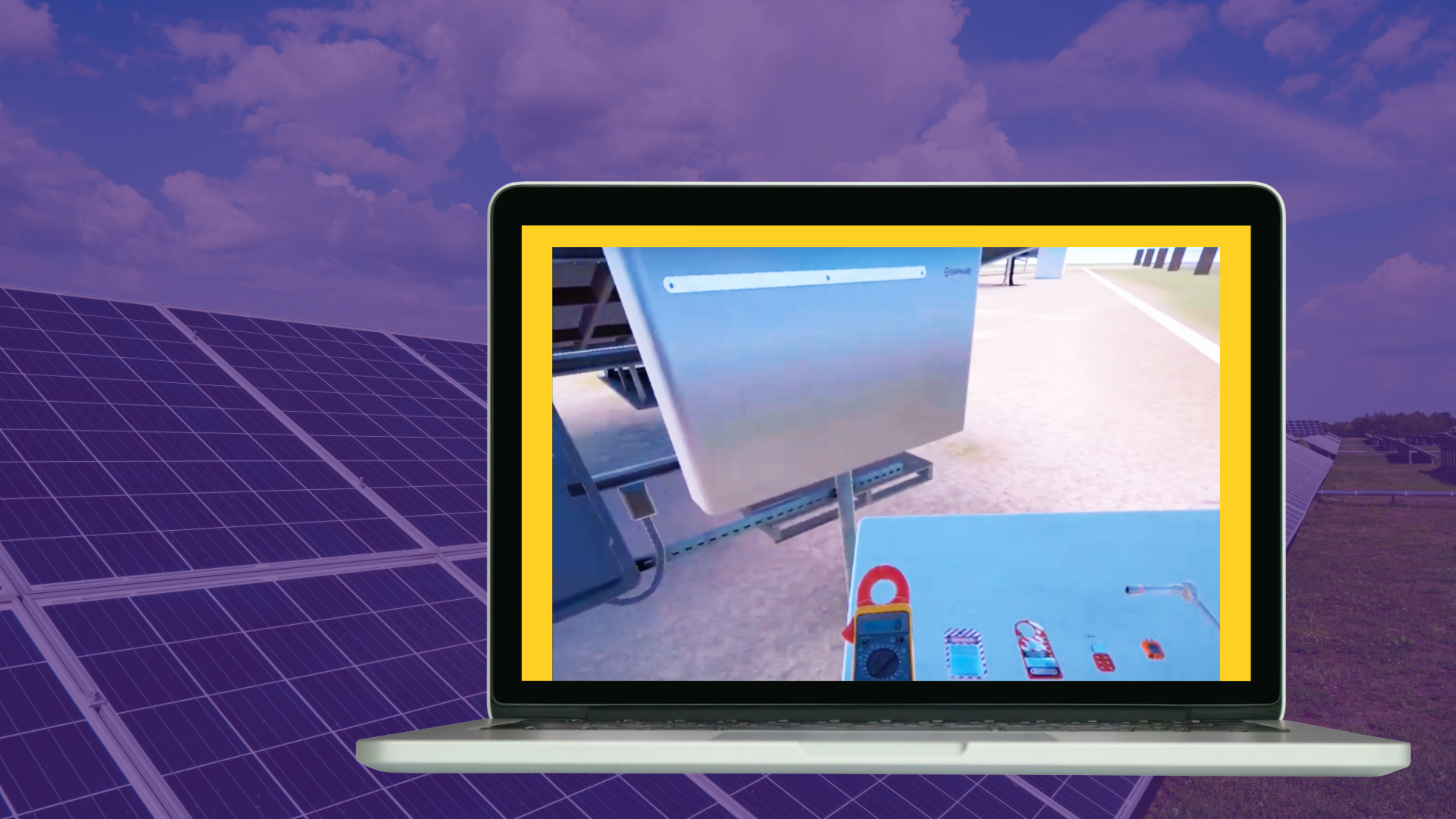
An example of virtual training for solar panel installation planned for the Iberia Parish Clean Energy Hub.
Much of that testing, thanks to new digital twin technology, will take place in a virtual replica of Iberia Parish. This technology will enable the team to simulate the impacts of green energy solutions, demonstrate to residents what they will look like, and even train them on how to build, install, and use these technologies before they are ever implemented in real life.
“Meanwhile, we're going to engage the community with education, trying to understand what's driving resistance and then addressing those concerns,” Schwarz said.
But the team isn’t planning to educate, set up green energy solutions, and then just leave. “This isn’t just a research project. This is home,” Schwartz said. Many of the Gulf Futures Challenge project team members have homes in Iberia Parish. The project's aim is also to develop the local workforce so that they can take over the operation of established green energy solutions.
Gulf-Wide Impact
Other finalists in the Gulf Futures Challenge are pursuing projects to:
- Better understand factors of community and healthcare resilience in the aftermath of natural disasters
- Supply local communities with solar and battery microgrids, as part of the Community Lighthouse project
- Repurpose durable and anti-corrosive wind turbine blades to build sea walls, elevated-house columns, and other coastal resilience structures
Associate Professor Jen Scott of the LSU School of Social Work is a partner on the
Community Lighthouse project team, supporting research to understand how the project
affects social relationships and wellbeing.
“I am thrilled to be part of such an innovative team that is committed to not only
ensuring people have access to power during disasters - meaning access to life-saving
supports like cooling stations, food, and water - but also to the everyday work of
strengthening communities and to building stronger evidence to explain how all of
that works,” Scott said.
According to NASEM, all of the finalist projects are united by a common goal of “creating safer and more resilient communities where people in the Gulf can live, work, and thrive.”
The final winners of the Gulf Futures Challenge are expected to be announced in early 2026.
Learn more at the Gulf Futures Challenge website.
Next Step
LSU's Scholarship First Agenda is helping achieve health, prosperity, and security for Louisiana and the world.
